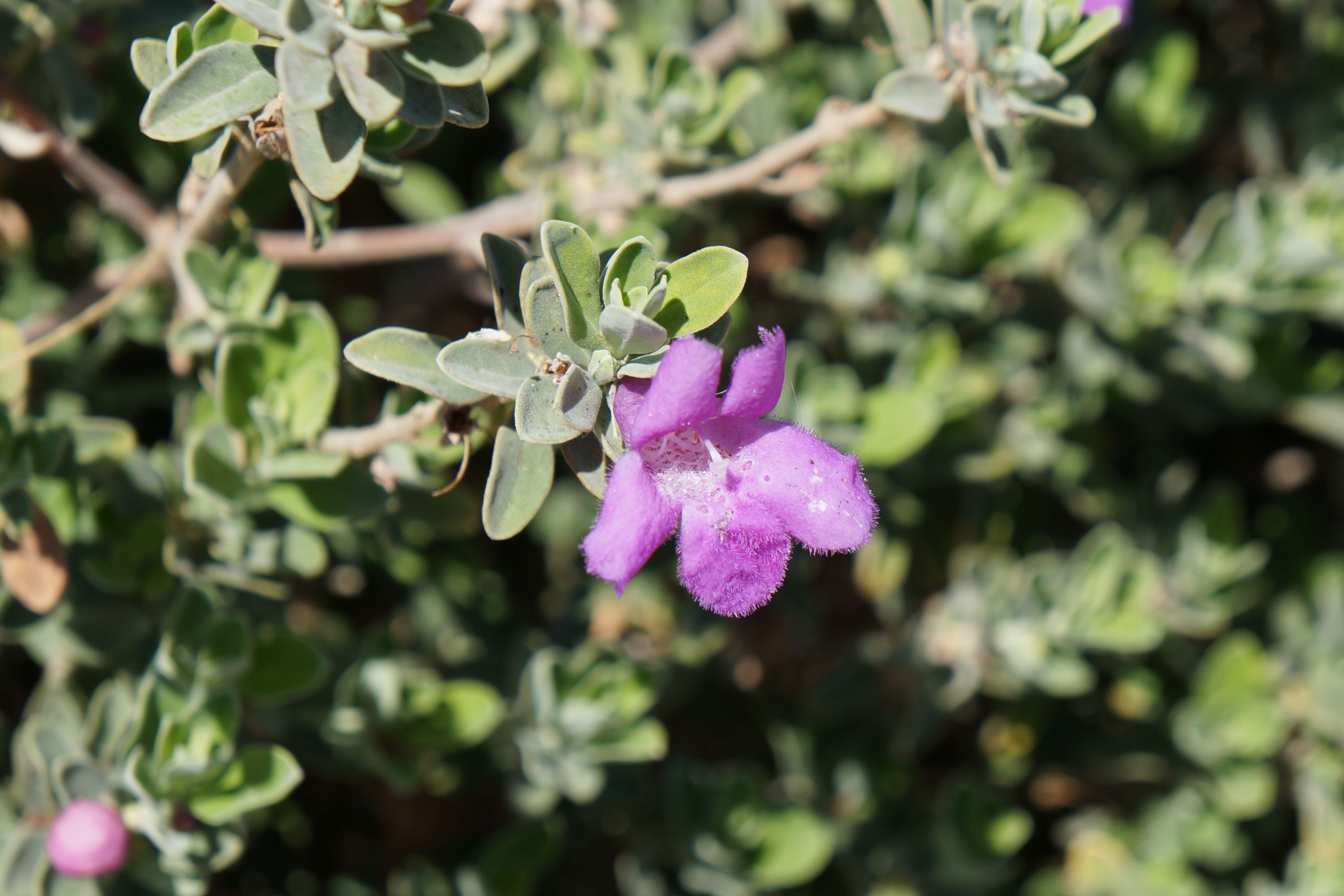Desert pride
(Eremophila mackinlayi)

Description
Eremophila mackinlayi, commonly known as desert pride, is a flowering plant in the figwort family, Scrophulariaceae and is endemic to Western Australia. It is a shrub with its branches and leaves covered with a thick layer of yellow to grey hairs, mostly egg-shaped leaves and deep lilac-coloured to purple flowers. It is most closely related to E. strongylophylla and E. hygrophana and sometimes occurs in the same areas as these species. Eremophila mackinlayi is sometimes a spreading shrub, other times erect, growing to a height of 0.2–1 m (0.7–3 ft). Its leaves and branches are covered with a thick layer of yellow to grey branched hairs but lack the glandular hairs present on the foliage of E. strongylphylla and the simple hairs of E. hygrophana. The leaves have a stalk about 2–5 mm (0.08–0.2 in) long and a blade that is mostly 10–30 mm (0.4–1 in) long, 7–14 mm (0.3–0.6 in) wide, egg-shaped to lance-shaped, sometimes wavy, with an obvious mid-vein on the lower surface. The flowers are borne singly in leaf axils on a hairy stalk which is up to 1.5 mm (0.06 in) long and, unlike those of E. hygrophana, are densely clustered near the ends of the branches. There are 5 hairy, narrow triangular to lance-shaped sepals which are 8.5–13.5 mm (0.3–0.5 in) long. The petals are 25–35 mm (0.98–1.4 in) long and are joined at their lower end to form a tube. The petal tube is deep lilac-coloured to purple on the outside, white without spots inside. The outside of the tube and petal lobes is covered with branched hairs, the inside of the lobes is glabrous and the inside of the tube is densely woolly. The 4 stamens are fully enclosed in the petal tube. Flowering occurs from May to October and the fruits which follow are oval or bottle-shaped, with a dense covering of woolly hairs and are 7.5–10 mm (0.3–0.4 in) long. Subspecies mackinlayi occurs in near-coastal areas between Shark Bay and Carnarvon in the Carnarvon and Murchison biogeographic regions. It grows in calcareous and sandy soils, often in mulga woodland. Subspecies spathulata occurs between Leonora, Wooleen and Mullewa in the Carnarvon, Murchison and Yalgoo biogeographic regions. It usually grows in red-brown loam near drainage channels in mulga woodland.
Taxonomic tree:







